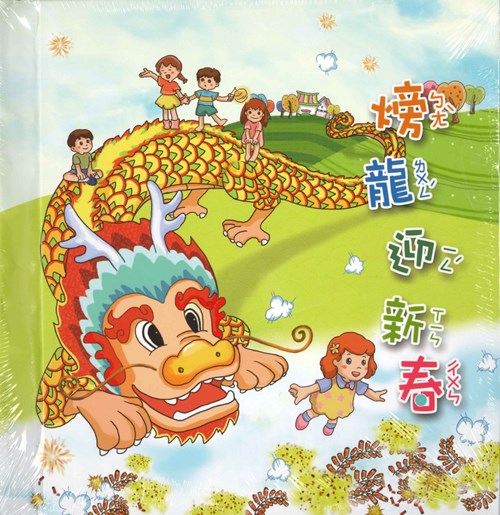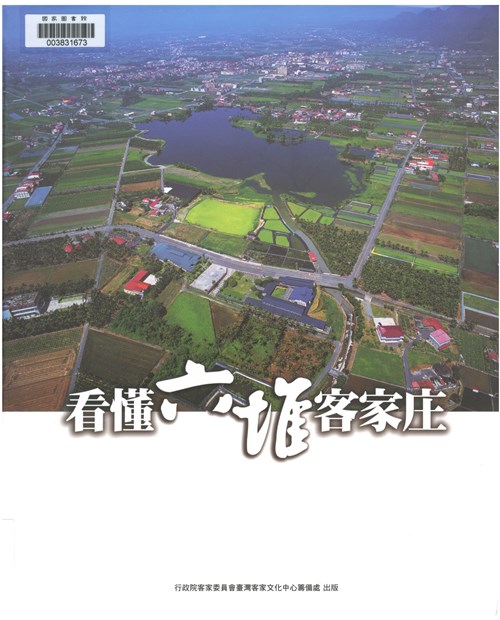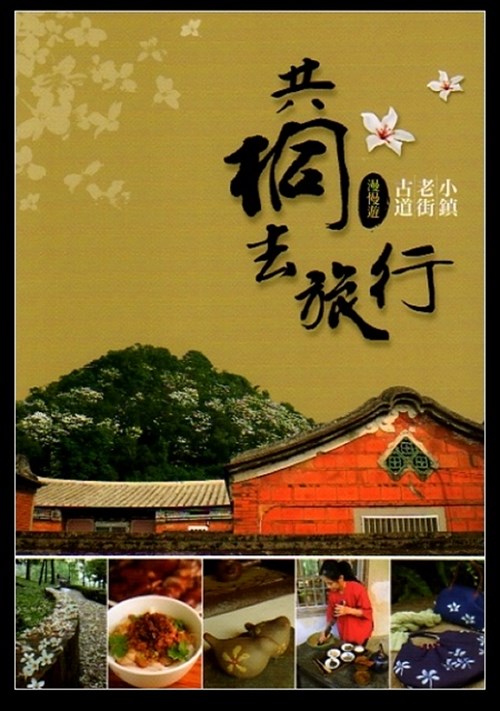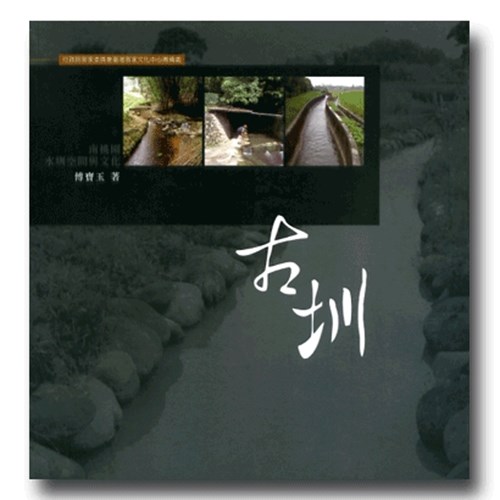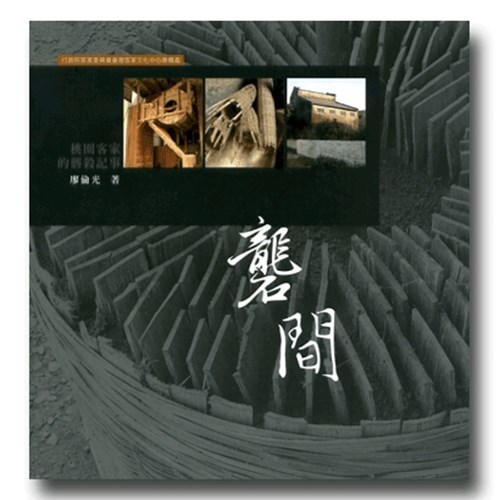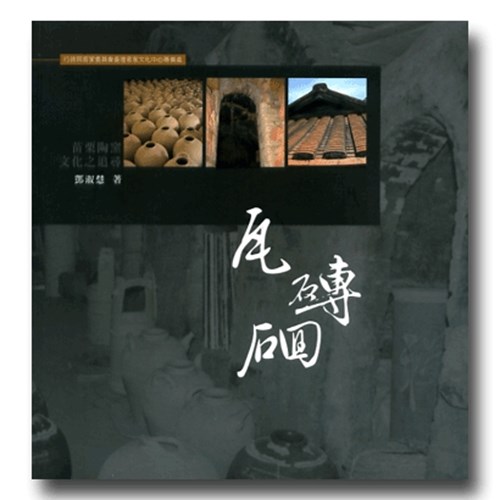
Research & Library
Publications

-
![]()
The Japanese Hakka - A Preliminary Study of Japanese Hakka Studies
Publication Date:Book Title: The Japanese Hakka - A Preliminary Study of Japanese Hakka Studies Publishing Institution: Hakka Culture Development Center, Hakka Affairs Council Editor / Author / Translator: Publisher: Date of Publication: February, 2015 This book compiles the results of researches carried out by the Hakka Culture Development Center, Hakka Affairs Council targeting Hakka population living in Japan, including topics such as the analysis of Japanese Hakka publications, literature review of Japanese Hakka culture, preliminary research of Japanese Hakka culture and ethnicity, analysis of Japanese Hakka immigration and population, characteristics of professions of the Japanese Hakka population, community and public participation of the Japanese Hakka population, Japanese Hakka characteristics, etc.
-
![]()
Bombing Dragon Welcomes the New Year (Pop-up Cartoon Sound Storybook)
Publication Date:Authors: Feng, Hui-yue and Ho, Jia-changPublication Date: January 2016“It’s everyone’s favorite time of year—the Lunar New Year! The Friendly Dragon and his friends have come down to visit the Hakka villages. Where will they go, and what kinds of fun adventures await them?”Designed especially for lower-grade children, this pop-up storybook introduces young readers to Hakka New Year traditions through the theme of the Miaoli Bombing Dragon Festival (苗栗𪹚龍, meuˇ lid bong liungˇ). The story follows the Hakka hospitable Dragon as he descends to the Hakka villages to celebrate the New Year, depicted through lively pop-up 3D scenes featuring dragon parades, firecracker displays, and festive village activities, enhanced by interactive elements such as sound effects, lift-the-flap cards, lenticular images, and heat-sensitive ink.To enrich children’s engagement, the project also includes a multilingual animated audio book (in Mandarin, Hakka, English, and Japanese), along with quiz games and a Bombing Dragon puzzle set. These multi-sensory experiences allow children to learn Hakka vocabulary, explore Hakka traditions, and experience the joyful and vibrant spirit of Hakka Lunar New Year celebrations.
-
![]()
Hakkas Abroad: The Life and Culture of Hakka Communities in Southeast Asia
Publication Date:Editor: Lim Khay-ThoingPublication Date: August 2013This work compiles selected papers and keynote presentations from the 2012 International Conference on Southeast Asian Hakka Studies. The collected works explore a broad range of topics concerning the Hakka communities of Southeast Asia, including religious practices, leadership and associations, industries and commerce, everyday life, and new perspectives on Southeast Asian Hakka studies from younger generations.
-
![]()
Understanding the Hakka Villages——Liugdui (Second Print)
Publication Date:Authors: Ting, Cheh-shyh, Ku, Shao-chi, Li, Yun-fei, Shih, Ya-hsuan, Chen Mei-zhen, Zeng, Zhao-xiong, Liu Hsiu-mei, and Lu Chien-mingPublication Date: April 2009 Located on the plains of southern Taiwan, Liugdui—literally meaning “Six Divisions”—is a network of Hakka settlements that developed one after another along the riverbanks, forming a continuous chain of villages. These communities not only relied on rivers for irrigation but also used them as natural defensive barriers. Since the earliest period of Hakka settlement, the pioneers applied their agricultural knowledge and engineering skills to dig artificial irrigation canals, transforming barren lands into fertile rice fields. Their ingenuity laid the foundation for the later development of modern agriculture in the region. For many years, Liugdui remained an unfamiliar term, quietly hidden in Taiwan’s history. It was not until the Return our Mother Tongue Movement (還我母語運動) of 1988, which marked a new era in Hakka cultural revitalization, that Liugdui reemerged in public consciousness—becoming a key concept in contemporary Hakka discourse and a recognized cultural heritage of Taiwan.This work serves as a bridge for communicating the culture of the Liugdui Hakka villages, combining photography with historical and ethnographic essays to clearly present the region’s cultural assets, natural beauty, and local character. The visual and textual narratives extend the platform of Hakka culture from Taiwan to the wider world. By viewing the settlements from above, the work offers a fresh perspective beyond linguistic or academic frameworks, revealing in a striking way the geographic harmony and aesthetic richness of Liugdui—from tobacco-curing barns, the Huofangs (夥房, a single-surname lineage compound) ancestral halls, the Weilongwu (圍龍屋, a multi-family, multi-surname compound) and distinctive local industries—all of which provide an engaging gateway to the deeper understanding of Hakka culture.
-
![]()
Catalogue of Hakka Cultural Artifacts
Publication Date:Author: Lin, Jiuan-jiuanPublication Date: April 2009This catalogue compiles the collections of nine Hakka cultural museums across Taiwan whose artifact databases are among the most complete to date. It systematically classifies and registers a wide range of Hakka cultural objects—including household utensils, farming tools, musical instruments, documents, and more. Each entry is accompanied by a photograph, item name, catalog number, dimensions, materials, and description of function, providing a clear and comprehensive record of Taiwan’s preserved Hakka cultural heritage.
-
![]()
Traveling along with the Tung Blossoms
Publication Date:Editor: Sunkids Publishing Company Ltd., Editorial Department.Publication Date: April 2009A promotional publication for the 2009 Hakka Tung Blossom Festival, commissioned by the Council for Hakka Affairs.Every year from late spring to early summer, the white tung blossoms, as pure as falling snow, bloom across the Hakka mountain villages of central and northern Taiwan, bringing a sense of romance to the landscape. Yet beyond the blossom season, these charming Hakka towns are worth visiting year-round—whether it’s the nostalgic, old market of Xinpu (新埔) filled with the sounds of people speaking Hakka, the Oriental Beauty tea cultivated on the rolling hills of Beipu (北埔) and Emei (峨眉), the fragrance of grass jelly in Guanxi (關西), or the salty-smelled Fu-chai (made from salt leaf mustard's leaf) of Gongguan (公館). Each small town offers its own distinct character and warmth, waiting to welcome visitors.The book features ten thematic travel routes, showcasing the most captivating tung blossom trails, Hakka villages, and historic small towns. Through themes such as eco-trails, historic paths, traditional Hakka cuisine, artisanal industries, and vernacular architecture, it weaves together the natural splendor of the tung blossom season with the rich cultural heritage of the Hakka people—inviting readers to experience a journey where nature and culture bloom together.
-
![]()
Reading Liugdui from the Bird’s-Eye View
Publication Date:Authors: Zeng, Zhao-xiong and Shih, Ya-hsuanPublication Date: February 2008This work presents the landscape of Liugdui through a collection of aerial photographs, accompanied by interpretive texts on its geography, history, and cultural heritage. The Liugdui region in Kaohsiung and Pingtung is one of the earliest Hakka settlement areas in Taiwan and still preserves many traditional features that distinguish it from the Hakka communities of northern Taiwan.Scattered like constellations across the foothill plains of southern Taiwan, the Liugdui villages each possess their own stories, patterns, and cultural identities, expressed through distinct architectural forms, local industries, and shared Hakka traditions. Viewing these settlements from above offers a fresh perspective, which beyond conventional linguistic or cultural analyses, revealing, in the most direct and striking way, the beauty and vitality of Hakka settlement landscapes. Whether it is the tobacco-curing barns, communal dwellings, ancestral halls, walled courtyard houses, or specialized industries, each scene provides valuable insight into the deeper layers of Hakka cultural life.
-
![]()
Hakka Living Museum Series, Vol. 6 – The Ancient Irrigation Canals
Publication Date:Author: Fu Bao-yuPublication Date: October 2007The Hakka Living Museum Series is a collection of works based on extensive field investigations and ethnographic documentation of Hakka culture. Initiated by the Preparatory Office of the Taiwan Hakka Cultural Center, Council for Hakka Affairs, Executive Yuan, this series aims to preserve and promote Hakka heritage by selecting themes that resonate with the general public. Topics include familiar aspects of daily life such as “Blue Garments,” “Oil-Paper Umbrellas,” and “Pottery Kilns” (representing Hakka crafts), as well as “Tobacco Curing Barn,” “Rice Milling Workshop,” and “Irrigation Canals” (representing industrial and agricultural heritage sites). Prior to the construction of the Taoyuan Main Canal (1916) and the Shimen Main Canal (1956), Hakka settlers on the Taoyuan tableland had already developed a sophisticated traditional irrigation system. The historic canal routes, along with the stories and legends surrounding their creation, not only record the unique process of land reclamation in southern Taoyuan but also reflect the social organization, communal cooperation, and cultural customs of the Hakka people.
-
![]()
Hakka Living Museum Series, Vol. 5 – Rice Milling Workshop
Publication Date:Author: Liao, Lun-kuangPublication Date: October 2007The Hakka Living Museum Series is a collection of works based on extensive field investigations and ethnographic documentation of Hakka culture. Initiated by the Preparatory Office of the Taiwan Hakka Cultural Center, Council for Hakka Affairs, Executive Yuan, this series aims to preserve and promote Hakka heritage by selecting themes that resonate with the general public. Topics include familiar aspects of daily life such as “Blue Garments,” “Oil-Paper Umbrellas,” and “Pottery Kilns” (representing Hakka crafts), as well as “Tobacco Curing Barn,” “Rice Milling Workshop,” and “Irrigation Canals” (representing industrial and agricultural heritage sites). Drawing on field research conducted in Longtan, Xinwu, and Pingzhen in Taoyuan, the author documents and analyzes the architectural characteristics of twenty-six Hakka rice milling workshops. This study illustrates how these spaces served multiple roles—as places for rice dehusking, storage sites for harvested grain, and even informal lending venues for farmers in times of hardship. This work also introduces the rich body of Hakka proverbs, poems, and customs related to rice milling culture, offering readers a vivid glimpse into the daily lives and values of the Hakka farming communities.
-
![]()
Hakka Living Museum Series, Vol. 4 – Tile, Bricks, and Ceramics
Publication Date:Author: Deng, Shu-huiPublication Date: October 2007The Hakka Living Museum Series is a collection of works based on extensive field investigations and ethnographic documentation of Hakka culture. Initiated by the Preparatory Office of the Taiwan Hakka Cultural Center, Council for Hakka Affairs, Executive Yuan, this series aims to preserve and promote Hakka heritage by selecting themes that resonate with the general public. Topics include familiar aspects of daily life such as “Blue Garments,” “Oil-Paper Umbrellas,” and “Pottery Kilns” (representing Hakka crafts), as well as “Tobacco Curing Barn,” “Rice Milling Workshop,” and “Irrigation Canals” (representing industrial and agricultural heritage sites). Tile and pottery production have long been vital industries in the Miaoli region. Drawing on years of fieldwork and documentation, the author traces the historical evolution and cultural context of local kiln traditions. In addition to illustrating the important role of Miaoli’s ancient kilns in the history of Taiwan’s ceramic development, the book also explores how locally produced tiles, bricks, and hui (硘, broadly meaning “ceramics”) express the distinctive qualities of Hakka life and the character of local industries.


